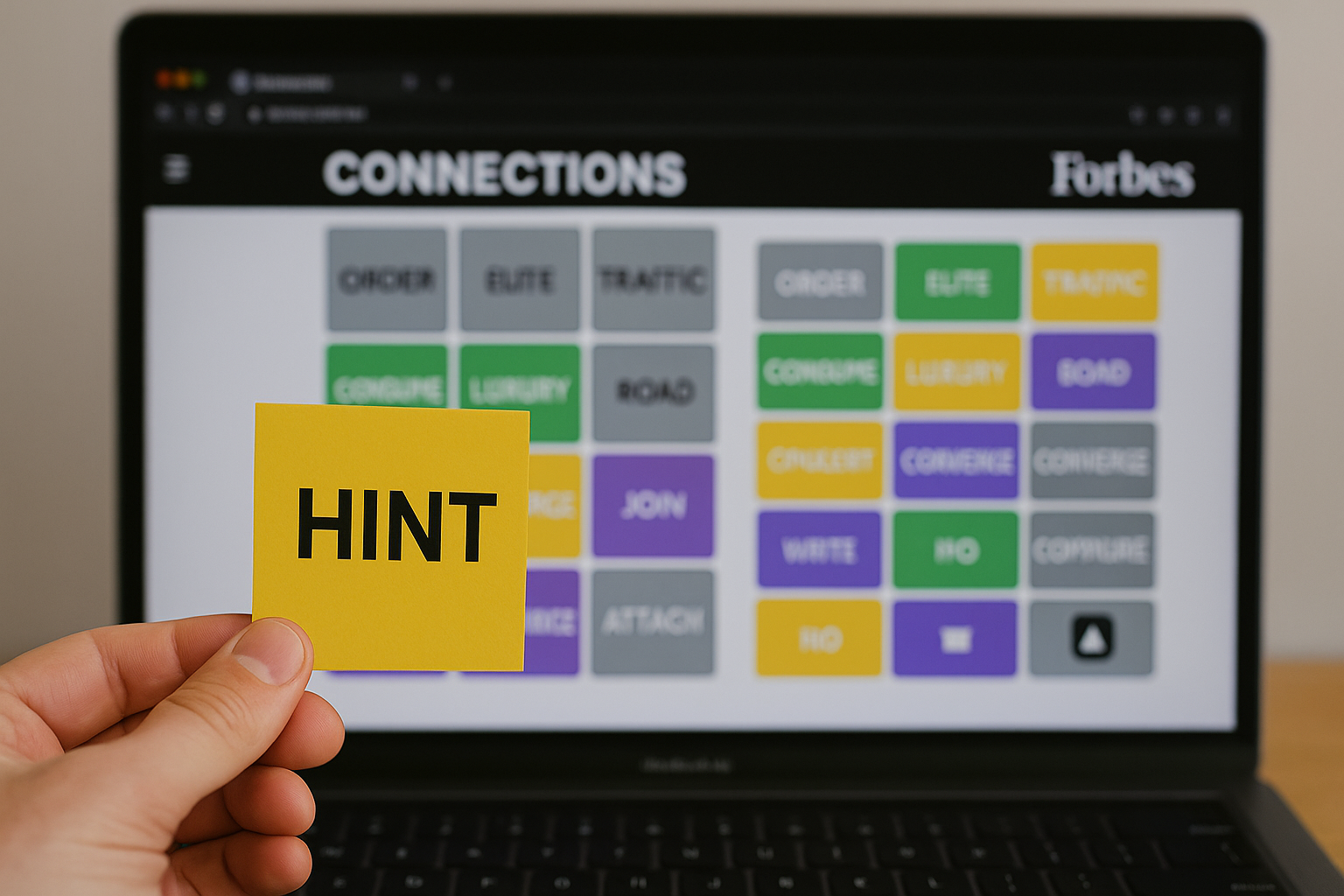Introduction to Forbes Connections
Forbes Connections is an engaging daily word puzzle game that challenges players to group words based on hidden relationships or themes. It blends logic, vocabulary, and pattern recognition into a brain-teasing experience that appeals to both casual and avid puzzle lovers. While the rules are simple, solving these puzzles consistently can be tricky without a strategy. That’s where well-thought-out hints and tactics can make a big difference.
How the Game Works
Each Forbes Connections puzzle presents you with sixteen words arranged in a grid. Your task is to divide these words into four groups of four, with each group sharing a common connection. These connections could be categories like synonyms, famous names, types of food, or even more abstract themes like wordplay or puns. The game tests both your vocabulary and your ability to detect subtle links between seemingly unrelated words.
Why Using Hints Matters
Many players find that having a few hints or strategies dramatically improves their success rate. Hints don’t give away the answers outright, but they nudge you in the right direction by helping you see patterns you might have missed. Using hints effectively allows you to stay engaged without getting frustrated, making the game more enjoyable while sharpening your critical thinking skills.
Start with Obvious Connections
The best starting point is to look for words that seem obviously connected. For instance, if you see “apple,” “banana,” “grape,” and “orange,” they likely form a fruit category. Clearing out easy connections early reduces the word pool, which makes identifying trickier groups much easier. This approach also builds momentum, giving you confidence as you solve the rest of the puzzle.
Use the Process of Elimination
When the puzzle becomes challenging, elimination can be your best tool. Test combinations of words you think might go together and see if they form valid groups. If they don’t, note which words seem out of place. By gradually ruling out incorrect pairings, you narrow down the possibilities and get closer to the correct answer. This systematic approach is especially useful when dealing with abstract or misleading categories.
Watch Out for Red Herrings
One of the trickiest parts of Forbes Connections is the use of red herrings—words that appear related but belong to different categories. For example, you might see “bass,” “drum,” “scale,” and “flute,” where “scale” could throw you off because it relates to music but also to measurement. Recognizing and questioning misleading words is a crucial skill. If a word seems to fit more than one group, set it aside temporarily until the surrounding categories become clearer.
Pay Attention to Wordplay
Forbes Connections often relies on clever wordplay. Sometimes the connection isn’t based on meaning but on spelling, homophones, or shared prefixes and suffixes. Words like “bear,” “bare,” “bar,” and “beard” could form a group based on similar spelling patterns. Watching for these less obvious links can help you catch categories that other players might overlook.
Break Down the Words into Parts
A useful tactic is to break each word into parts and analyze them individually. Look at prefixes, suffixes, roots, or even the number of syllables. This technique can reveal hidden patterns such as shared endings, rhyming structures, or word families. It’s especially effective for puzzles that use more technical or unfamiliar vocabulary.
Use Color-Coding and Grouping Techniques
As you test potential groups, it helps to mentally color-code or label them. Imagine highlighting words you suspect belong together. This visual technique helps organize your thinking and reduces the chance of mixing groups. If you’re solving on paper or a digital platform that allows marking, take full advantage of color coding to keep your ideas clear.
Slow Down and Double-Check
Speed can be tempting, but rushing leads to mistakes. Before finalizing a group, double-check that all four words truly share a single connection. If even one seems slightly off, reconsider the group. A careful, methodical pace ensures accuracy and prevents you from locking in incorrect groups that could derail the entire puzzle.
Learn from Previous Puzzles
Each puzzle you solve adds to your pattern recognition skills. Reflect on past puzzles and notice what types of categories frequently appear—colors, animals, sports, famous people, and so on. Over time, you’ll develop an intuition for spotting likely groups, which speeds up your solving process and increases your accuracy.
Practice Pattern Recognition Daily
The more you play Forbes Connections, the better your brain gets at seeing patterns. Treat each puzzle like a daily workout for your mind. Regular practice strengthens your vocabulary, improves memory recall, and makes recognizing categories almost instinctive. Even if you don’t win every day, consistent effort will steadily raise your success rate.
Don’t Be Afraid to Reset and Restart
If you get stuck and can’t see any new connections, don’t hesitate to reset the puzzle mentally or physically. A fresh start with a clear mind often makes hidden patterns suddenly pop out. Taking short breaks also helps—stepping away for a few minutes can give your brain the reset it needs to approach the puzzle from a new perspective.
Common Category Types to Watch For
While Forbes Connections is known for creativity, certain category types appear often. Being familiar with them gives you a head start. Common themes include:
- Colors or color shades
- Countries, capitals, or geographic landmarks
- Synonyms or antonyms
- Famous authors, artists, or athletes
- Food groups or ingredients
- Musical instruments or genres
- Wordplay categories (anagrams, rhymes, homophones)
Recognizing these common patterns can help you quickly sort through the words and eliminate distractions.
Final Thoughts on Mastering Forbes Connections
Forbes Connections is a fun yet challenging puzzle that rewards sharp thinking, creativity, and persistence. By using smart hints and proven strategies—like starting with obvious groups, eliminating red herrings, watching for wordplay, and practicing daily—you can significantly improve your solving skills. Each puzzle becomes less about guesswork and more about pattern recognition and logic. With patience and consistent effort, you’ll soon find yourself mastering every puzzle that comes your way.




